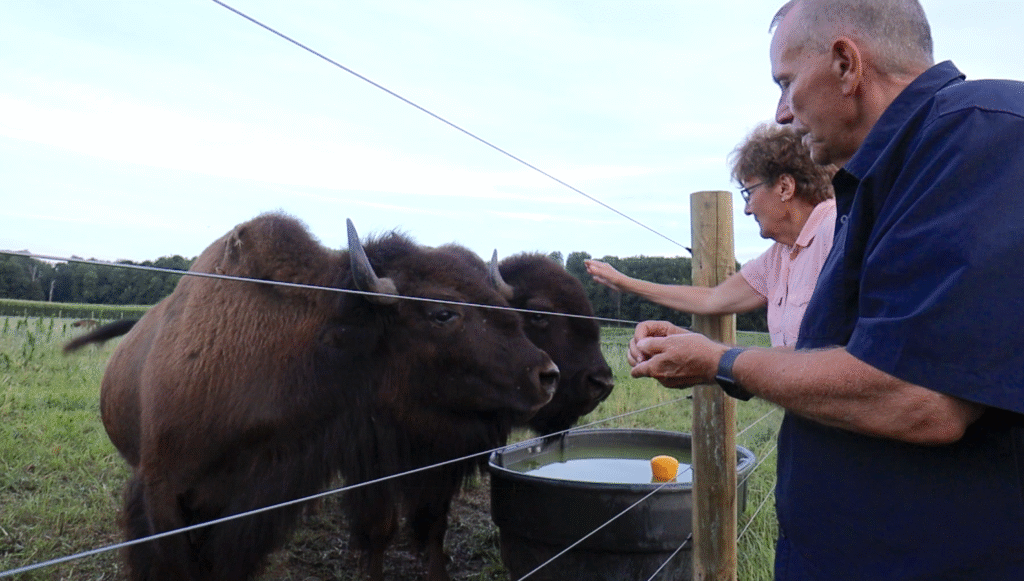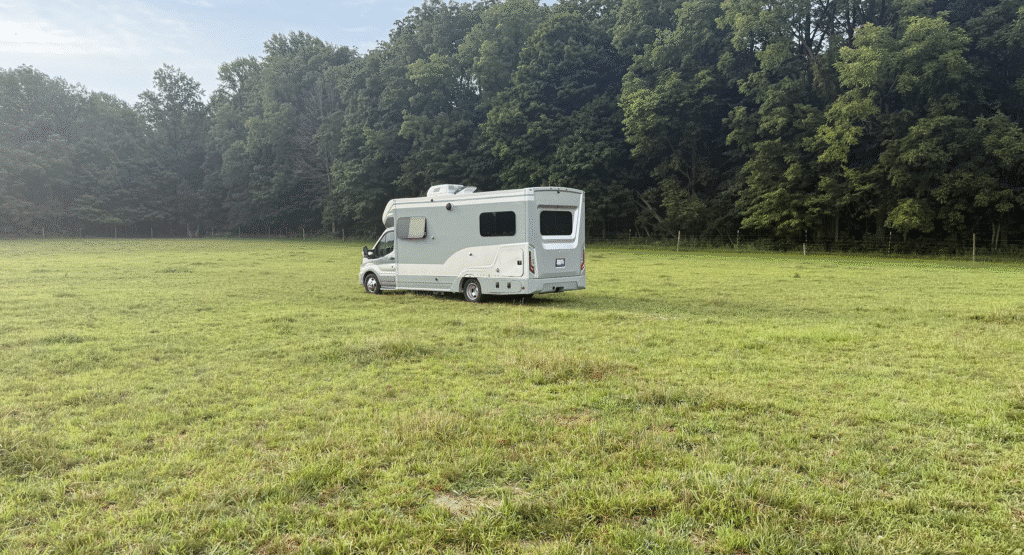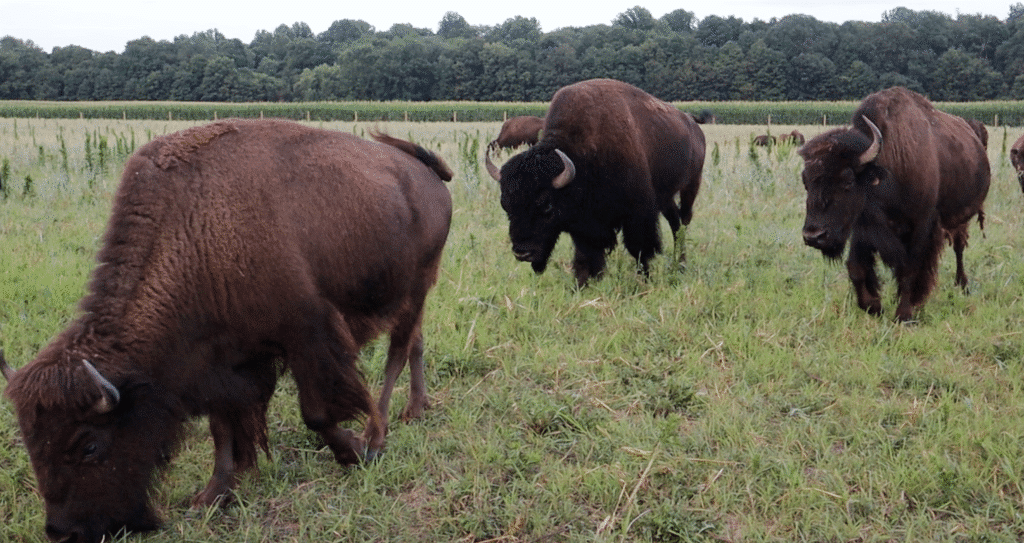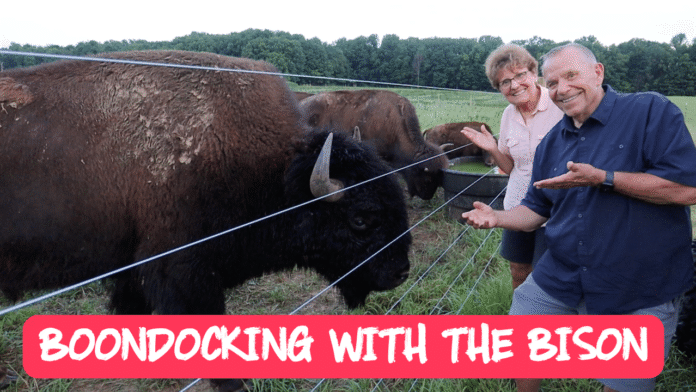One of the main reasons we bought a second RV this summer was to get back to boondocking—one of our favorite ways to camp, but something we haven’t done much of in recent years.
It’s not that our Montana High Country 311RD fifth wheel can’t handle boondocking. With a hefty bank of lithium batteries and 400 watts of solar on the roof, it’s more than capable. But for those truly remote, hard-to-reach spots—those backcountry hideaways and winding two-tracks—it’s just too long and too heavy.
At 35 feet for the fifth wheel and another 21 for our F-350 tow vehicle, it feels like trying to steer a semi-truck down narrow forest roads and rutted trails.
That’s why, a few weeks ago, we added a second rig to our lineup: a 26-foot Embassy RV Cape Cod, built on the Ford Transit chassis. It’s nimble, self-contained, and perfect for those places we used to love exploring. And it’s how we found ourselves boondocking alongside a herd of bison at a truly special place we discovered through RV Overnights. (At the end of this post, we have a special deal for you…)
Here’s a link to the video of our experience:
Boondocking with the Bison
Our destination was White Oaks Bison Farm, a 50-acre spread nestled a dozen miles off US-31, just north of Rochester. The drive in was all two-lane country roads, flanked almost the entire way by towering fields of corn—some stalks brushing the edge of our mirrors. When we arrived, we were greeted by our hosts, Terry and Courtney Engstrand, who welcomed us at the front gate. They gave us the choice: park on a gravel pad near the barn with 50-amp power or boondock out in one of the pastures.
Naturally, we chose the pasture.
To be clear, the bison weren’t in the same field—we weren’t quite that brave. The herd of 19 bison was just a few hundred yards away in a fenced area. As we made our way out, Terry pulled over and called them over to the fence. Sure enough, they slowly ambled up, familiar with the promise of treats. Terry handed us a bucket and let us feed them ourselves—a quiet, unforgettable moment with these massive, shaggy icons of the plains.

With sunset came 90-degree heat, so we cranked the AC, running it all night on our 920 amp hours of lithium. We slept cool and content under a black velvet sky full of stars, the stillness broken only by the distant snort of a bison or a whisper of wind through the pasture. It was so peaceful, so restorative—and it confirmed for us that buying a second RV was the right call.

The next morning, we rolled out of the field and met Terry a bit early, just before the day’s tour group arrived. As he fed the chickens, a curious turkey, and a friendly little Shetland named Gus, he began to share the remarkable story of the North American bison.
At one time, bison roamed this continent in staggering numbers, estimated at over 30 million. They were a cornerstone of the prairie ecosystem, grazing and moving in ways that replenished the soil, shaped the land, and sustained Indigenous cultures for centuries. But by the late 1800s, bison were nearly extinct. Less than a thousand remained, driven to the edge of survival by overhunting, habitat destruction, and a calculated effort to weaken Native communities by removing a critical food source.
The role the U.S. Army played in that near-eradication is still a source of pain and debate. While the Army didn’t single-handedly destroy the bison population, it turned a blind eye—or even gave quiet support—to mass slaughter, viewing it as a way to break the resistance of Plains tribes who depended on the animals. It’s a sobering chapter in our history, and one Terry doesn’t shy away from when he tells visitors the full story.
Today, farmers like Terry across the country are working hard to bring the bison back, not just as a symbol, but as a practical part of sustainable agriculture. Bison are easier on the land than cattle. They graze without overgrazing, fertilize as they go, and don’t need as much human intervention. Managed properly, they help restore prairie grasslands and improve soil health, all while offering a lean, healthy meat that’s lower in fat and higher in nutrients than beef.

What started as a quirky, off-the-grid boondocking stop turned into something far more profound.
Standing in that wide-open pasture, surrounded by grazing bison and the whispers of a reclaimed history, we realized this was about more than just a peaceful overnight stay.
It was about restoration—of land, of legacy, and of the quiet but powerful connection between people and place. As we hitched up the Cape Cod and rolled back down those quiet country roads, we left with more than just great memories of a starry night—we left with a renewed appreciation for the past and a hopeful glimpse into what stewardship and reverence for the land can still create.
RVOvernights is how we found the farm, and it’s a great app we plan to use to plot out many more such adventures. Their normal price is just $49 a year. With this LINK and with the code RVLDEAL our followers get $20 OFF.
Want to see MORE of our Destinations?
We have visited hundreds of destinations RVers love to explore. Here’s a tiny list of some of the best.






